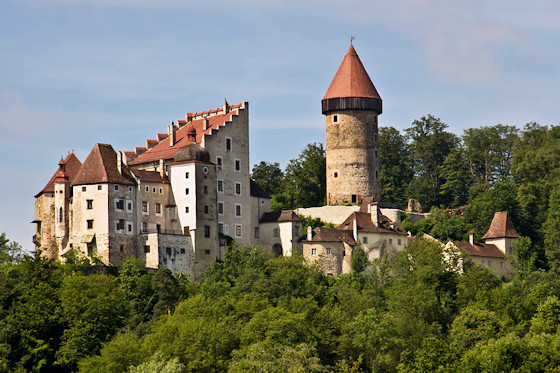
The travel guide says "one of the best preserved castles in Austria". The way from the Baumgartenberg monastery was strenuous, because at noon the sun was burning and it went uphill. Finally, when we reached the top, a magnificent shady avenue of oak trees leads up to the castle. There were no tourist herds, we were all alone.
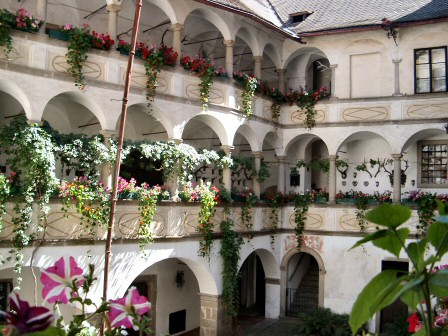
When we rang at the gate a nice lady came after some time and offered us a guided tour. It turned out to be the Countess Clam. Since 23 generations the castle Clam is now owned by the family.
In 1149 the castle Clam is mentioned in a document for the first time. At the time of the builder and owner Otto von Machland it consisted of the 5-storey palace (residential tower) and the keep (round tower).
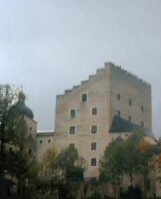
These two buildings, both over 40 metres high, can be seen from afar due to their exposed position on the granite massif above the gorge.
The second major construction phase took place in the Gothic period, when the eastern part with the "new" castle chapel was built. This we could visit. The castle survived the uncertain times of the 30-year war, it was never taken, but was in a very bad condition around 1600.
Under the rule of Baron Johann Gottfried von Clam, the castle was renovated in the 17th century (Renaissance) and the village of Klam was expanded.
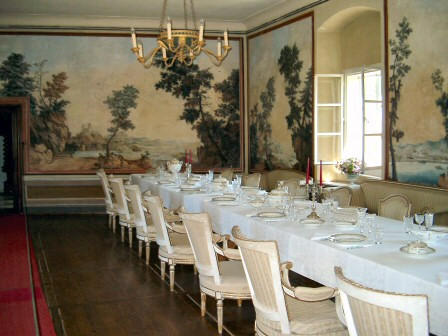
In the 18th century the farm buildings, stables and cart sheds were built, which today form the outer courtyard of the castle. Later the castle was
gradually converted from a fortress into a habitable castle. The moat was filled in and gave way to ornamental shrubs and flowers, and the drawbridge became a fortified access
road.
The castle also survived the two world wars of the 20th century relatively unscathed. Only the cold war left its traces:
In the eighties Heinrich Clam had a civil defence bunker built against nuclear radiation.
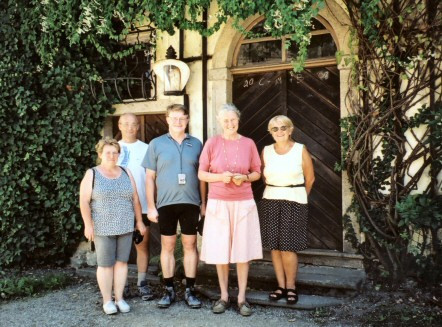
The castellan had the day off, so the Countess Clam herself led us through the castle - thank you very much!
see also: www.burgclam.com


Danube cycle route